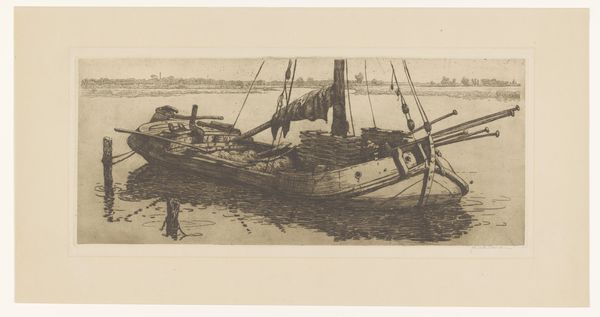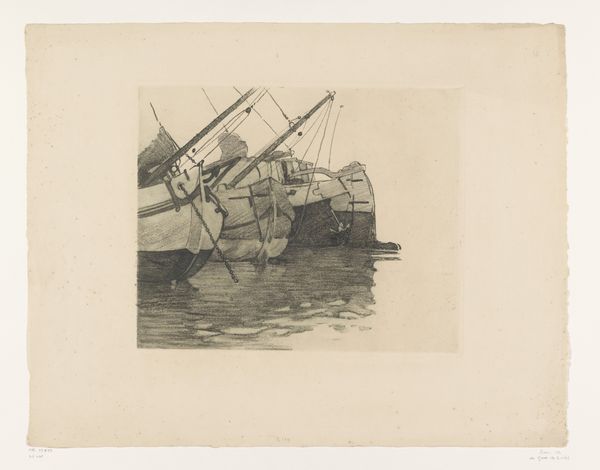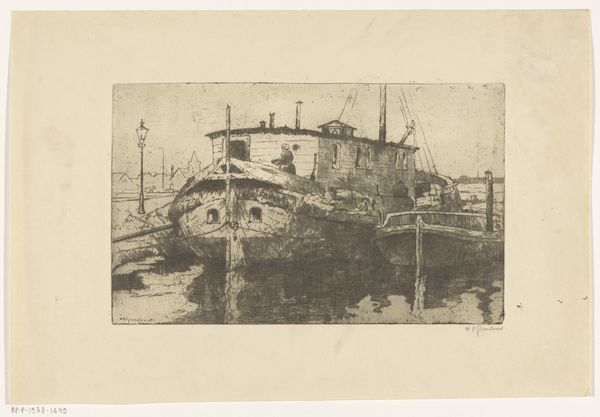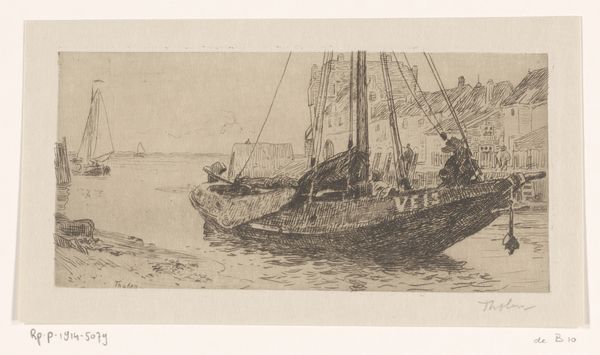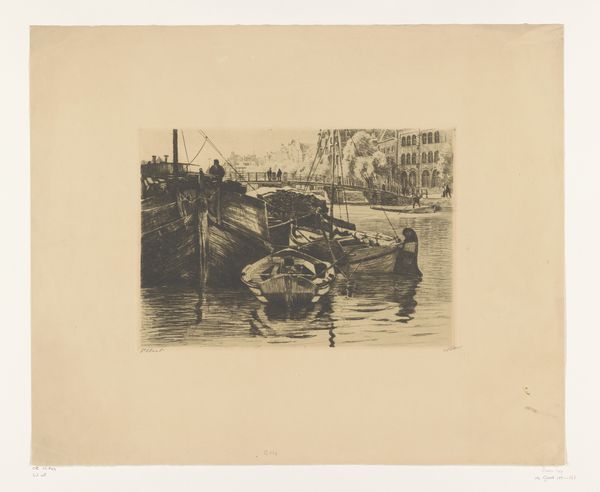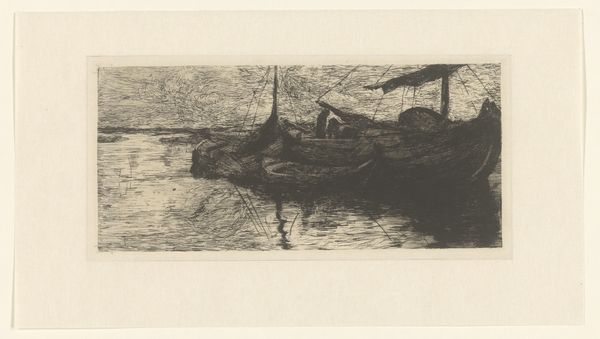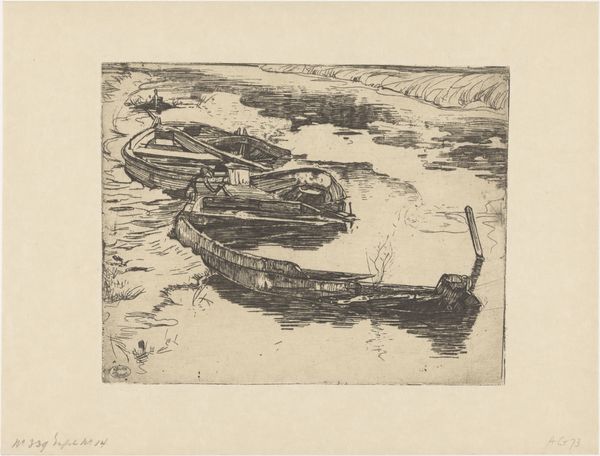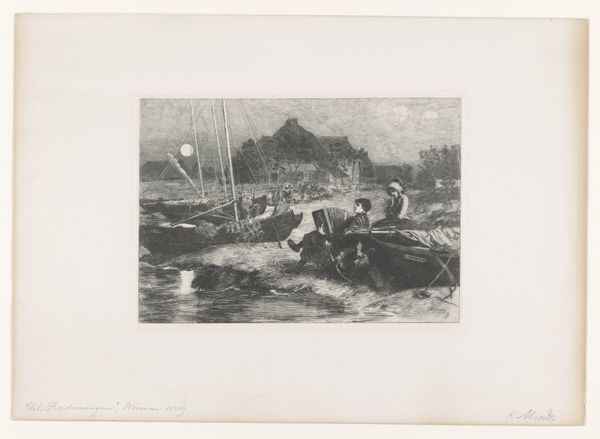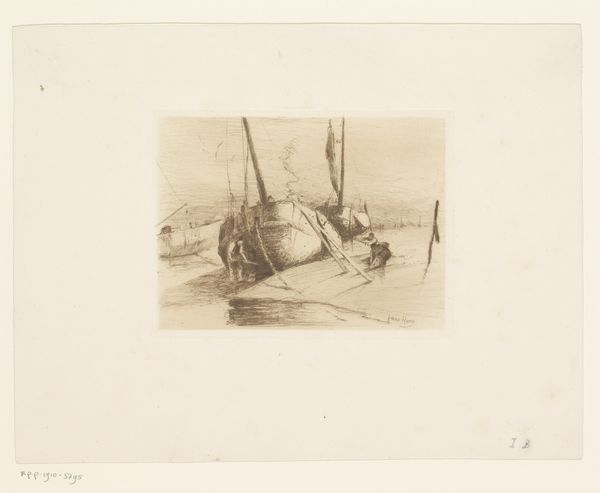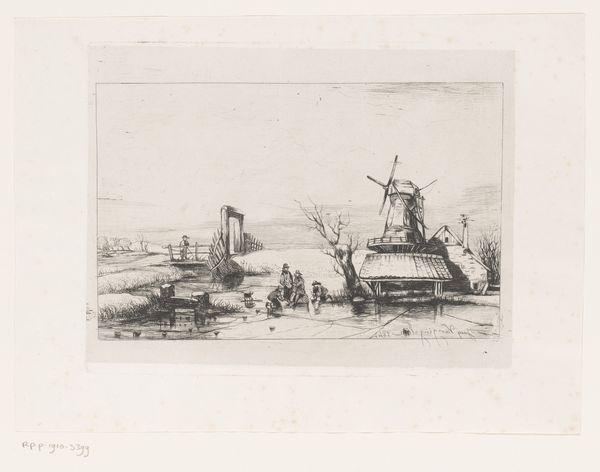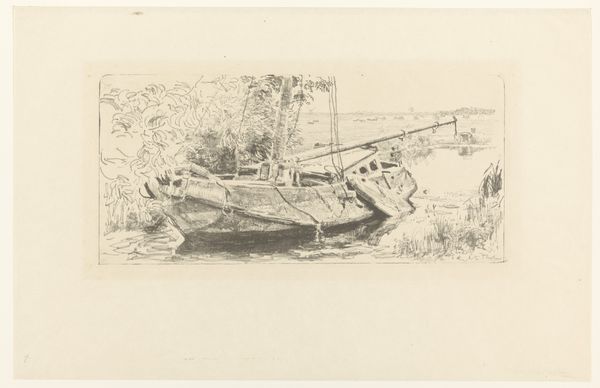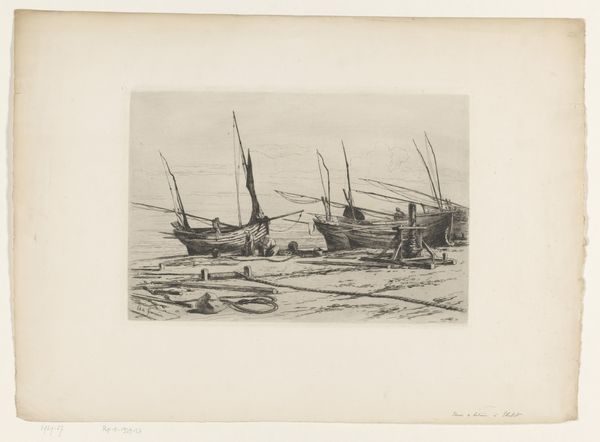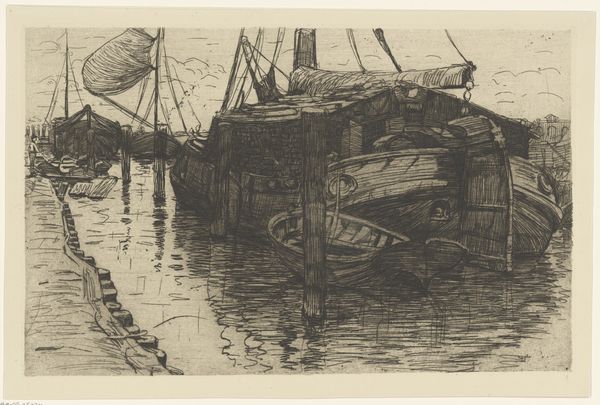
print, etching
#
dutch-golden-age
# print
#
etching
#
landscape
#
cityscape
#
realism
#
monochrome
Dimensions: height 315 mm, width 500 mm
Copyright: Rijks Museum: Open Domain
Curator: Let’s turn our attention to Jan Sirks’ 1913 etching, “Karrepaard bij de Rotterdamse haven,” or “Cart Horse by the Rotterdam Harbor.” What's grabbing your eye? Editor: The quiet mood, I think. Despite the bustling harbor scene implied, there’s a real stillness focused on that horse, head lowered, taking a drink. It feels very intimate and real. Curator: That intimacy, I believe, speaks to broader themes of labor and the everyday. Etchings, due to their accessibility, often served as a powerful medium for depicting and commenting on the lives of ordinary people. Think of it as a form of early photojournalism through an artistic lens. Editor: Absolutely! I get a strong sense of that here. The horse feels so... present. I imagine the scratch of the artist’s needle capturing every hair of that heavy blanket. You almost feel the dampness in the air and the cool water on the horse’s muzzle. Curator: Indeed. It invites us to consider the intersection of human and animal labor within a rapidly industrializing society. Rotterdam at this time was a crucial port. How do you see Sirks’ piece reflecting that broader historical context? Editor: It feels like a tribute, a recognition of the unseen labor that fueled the city. It is not just about the docks, but about how that single animal and driver enable global trade. It's quite affecting when you think of it that way. Curator: I completely agree. It's easy to overlook these narratives within traditional landscape art, but a closer inspection—a perspective that highlights working-class experiences—reveals so much more. It prompts us to consider not just the aesthetics but the politics of representation. Editor: It does, doesn't it? And in the quietness of that scene, there’s almost a challenge to notice what we tend to ignore: the stories of working people and animals. Thanks to the magic of the print, its a very accessible perspective. Curator: Precisely. Sirks’ work, when viewed critically, is less a passive reflection of a scene and more a social commentary rendered through quiet, empathetic observation. Editor: I hadn't thought about this piece in those terms, but I’ll definitely look at it differently from now on. What seemed so peaceful and documentary turns out to have unexpected layers of meaning. Thanks for guiding us on this one.
Comments
No comments
Be the first to comment and join the conversation on the ultimate creative platform.
